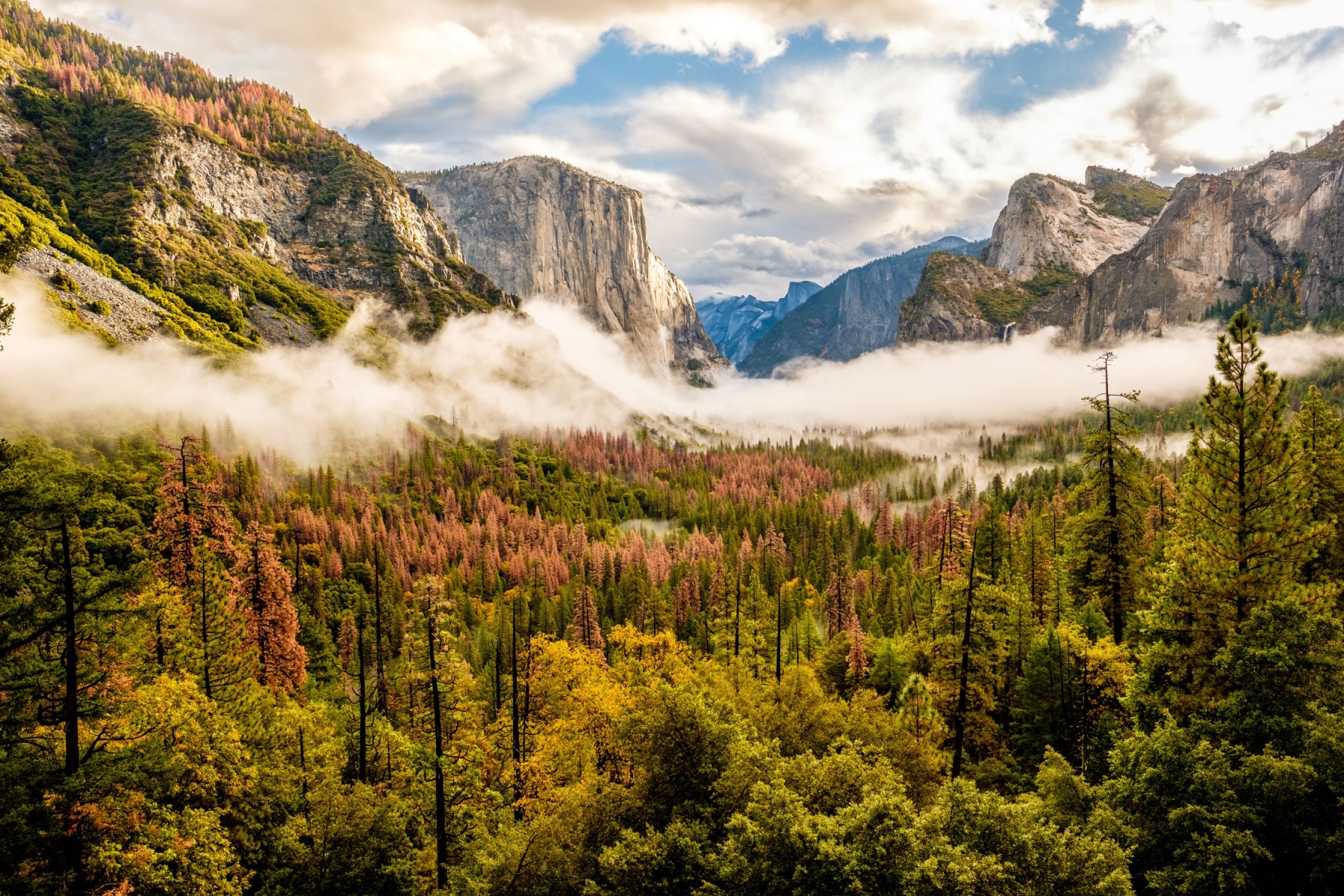
Article Overview: Vising Yosemite in the Fall
Enough was enough with the Yosemite National Park crowds – I needed to experience Yosemite in the fall. One of the best parts about Yosemite is that each season brings a new iteration and experience.
Yosemite’s transition to winter feels more alive to me than even spring, as the standard grays and greens seem to melt like a crayon box, painting a new landscape of reds, golds, and rust.
Let’s explore Yosemite in the fall, starting with the fact that “fall” technically means October and November. Yosemite in September, at least by Yosemite National Park standards, is still part of summer.
That story is told in the visitation statistics too. October has more breathing room. November is like being the last person left at a party, but it does come with some downside.
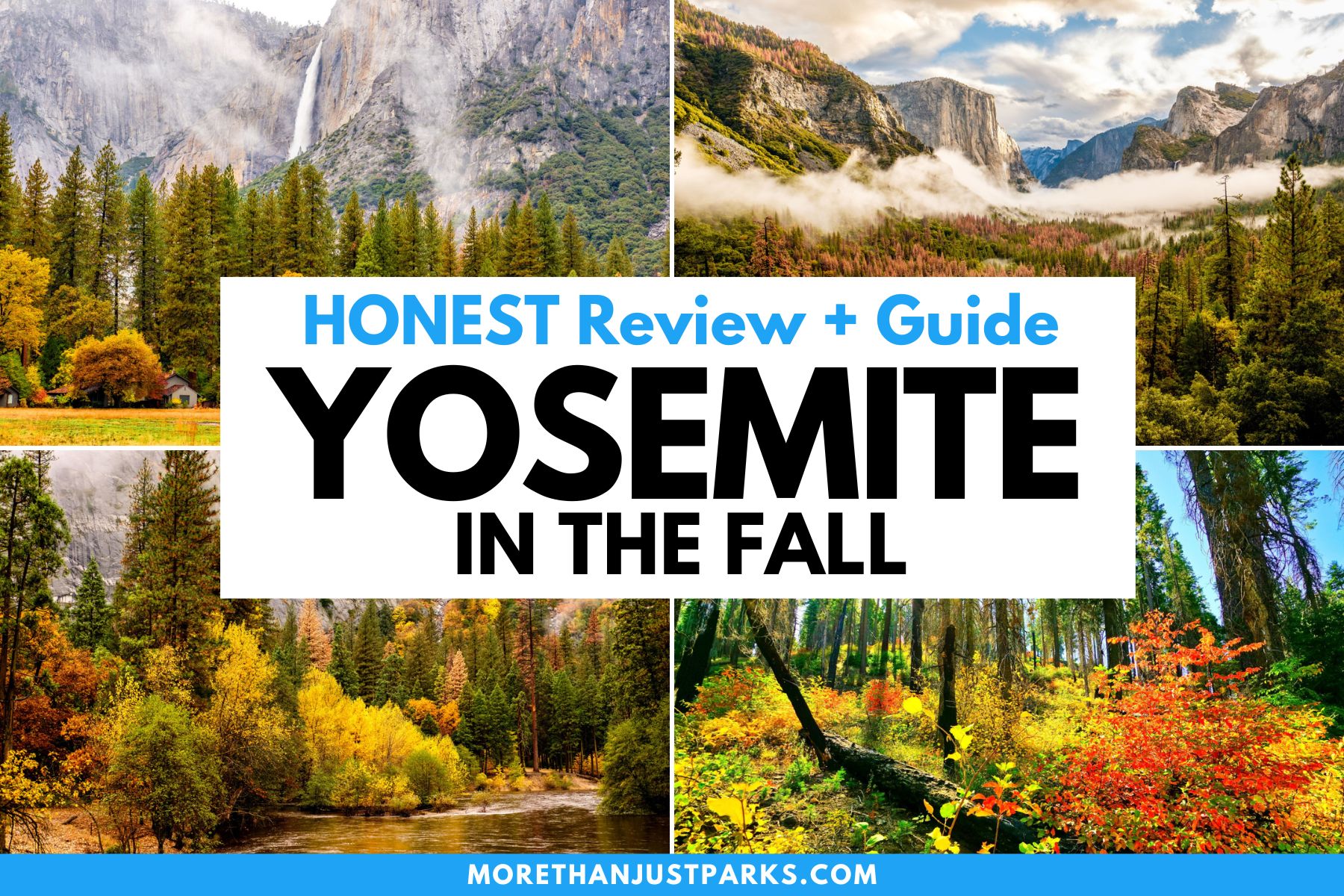
Table Of Contents: Yosemite in the Fall
Table of Contents: Yosemite in the Fall
- Avoiding Yosemite Crowds in the Fall
- Yosemite Fall Weather
- Fall Road Access in Yosemite
- Best Fall Foliage in Yosemite
- Bears in Yosemite in the Fall
- The Golden Hours of Yosemite
- Hiking Half Dome In the Fall
- Yosemite Camping In the Fall
- Yosemite Waterfalls in the Fall
- Visiting Mariposa Grove in the Fall
- FAQ: Yosemite in the Fall
- Is A Fall Yosemite Visit Worth It?
- Pin Yosemite in the Fall
- Helpful Related Links
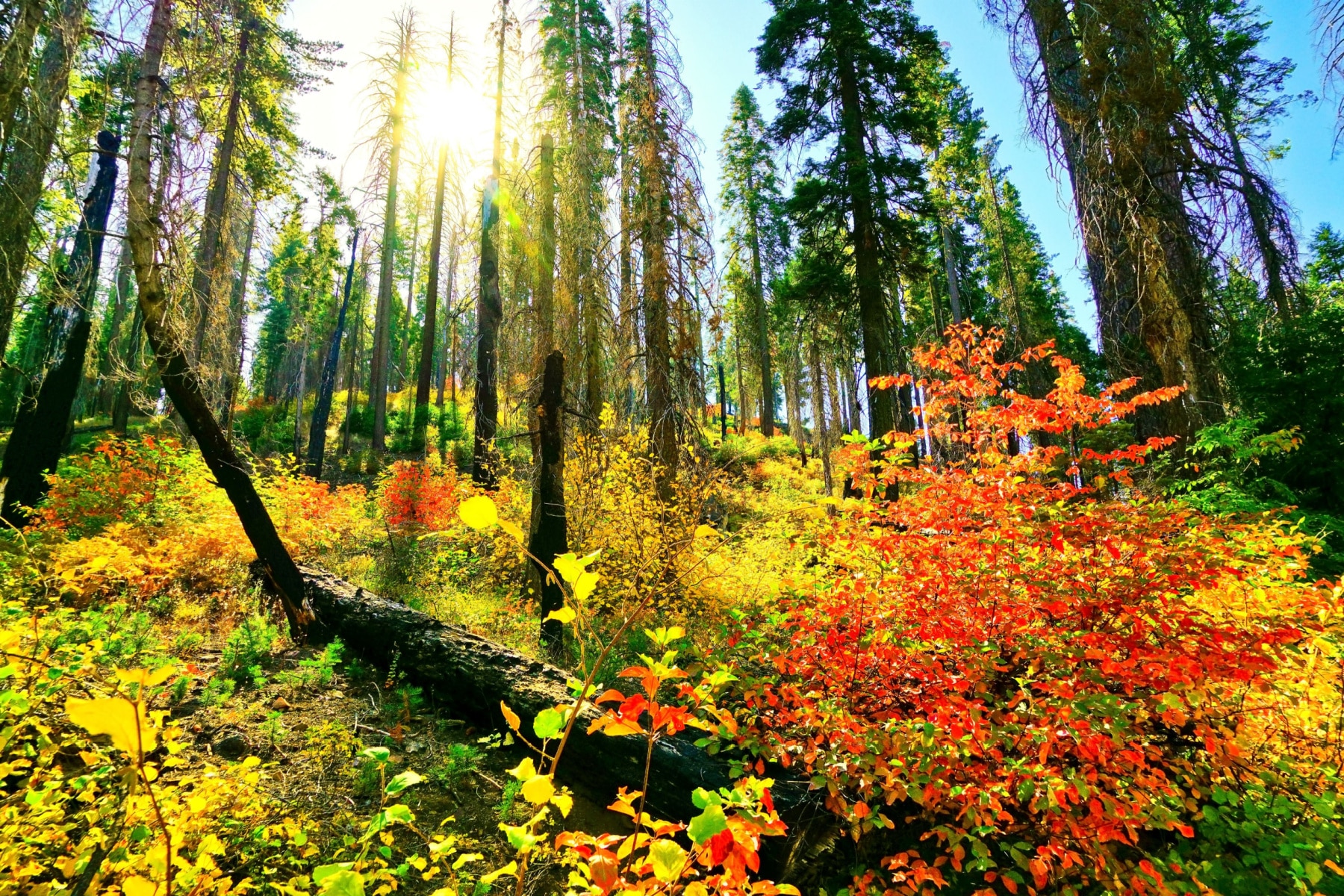
5 Quick Things to Know about Yosemite in the Fall
- Entrance fees are $35 per vehicle or $20 per person walking/biking in. Purchasing an America the Beautiful Pass covers entrance fees for 2,000+ public lands for a full year. That’s just $80. It’s important to note that one annual pass covers a carload of people.
- Half Domes chains come down usually the second Monday in October. If the weather allows, they might stay up later. If winter weather moves in, they could close earlier. Permits are required when the chains are up.
- Wear sunscreen and bug spray, even in the fall when you visit Yosemite National Park.
- Carry a guidebook and map with you. Mobile service can be spotty. You can also download offline maps using Google Maps for Yosemite National Park and surrounding areas.
- Here’s my favorite hotel for visiting Yosemite. It’s less than a mile from the main entrance and better suited to my budget than the hotels inside the park.
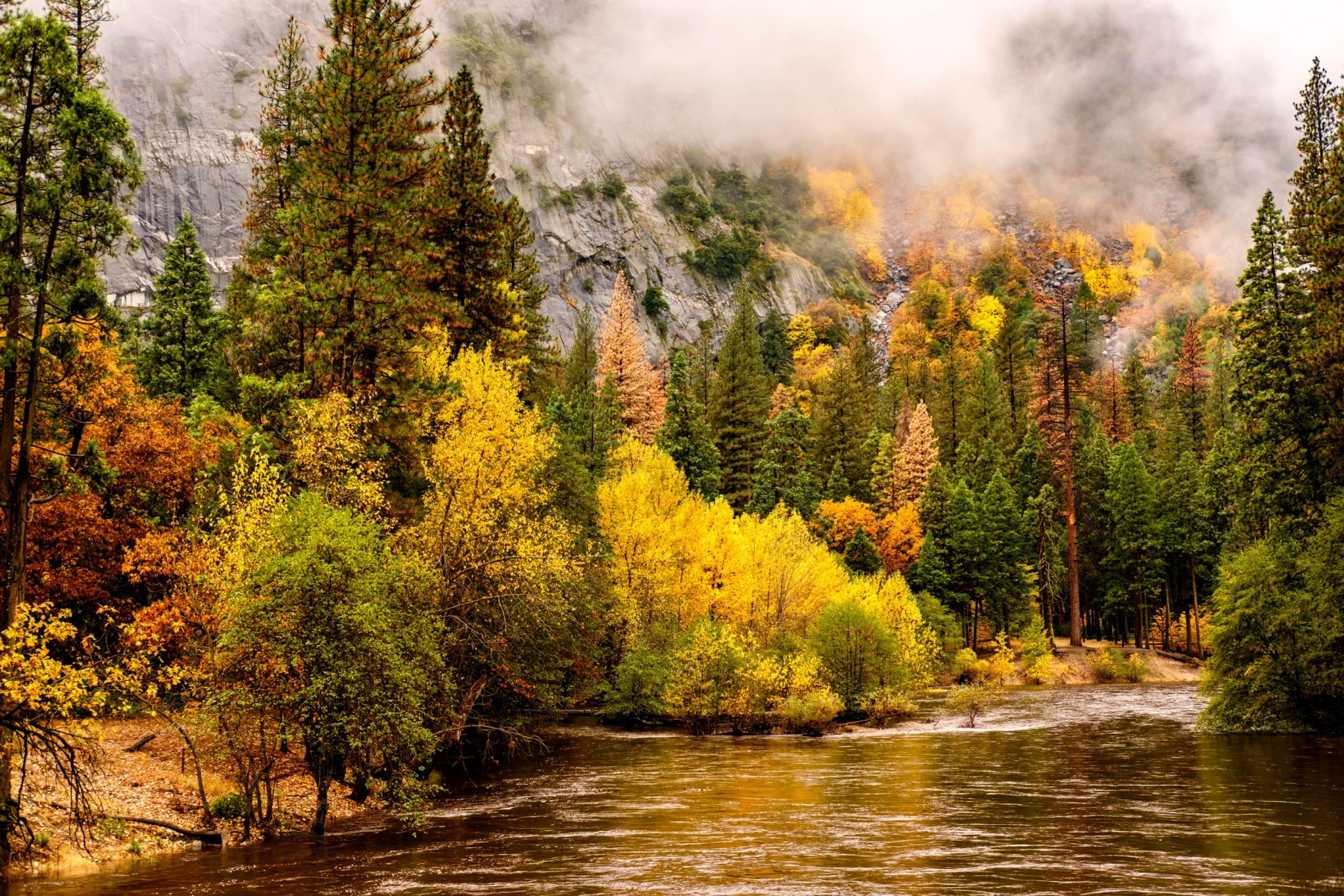
Avoiding Yosemite Crowds in the Fall
The busiest months at Yosemite National Park are May through October, with August, July, September, and June taking the top four busiest months.
October comes in at #5 on the busiest months but still has 45% fewer visitors than August. By November, visitation goes down 74% from peak crowds.
- August: 600,349
- July: 592,990
- September: 465,231
- June: 488,594
- October: 327,667
- November: 158,278
October and November account for 22% of all annual visitors.
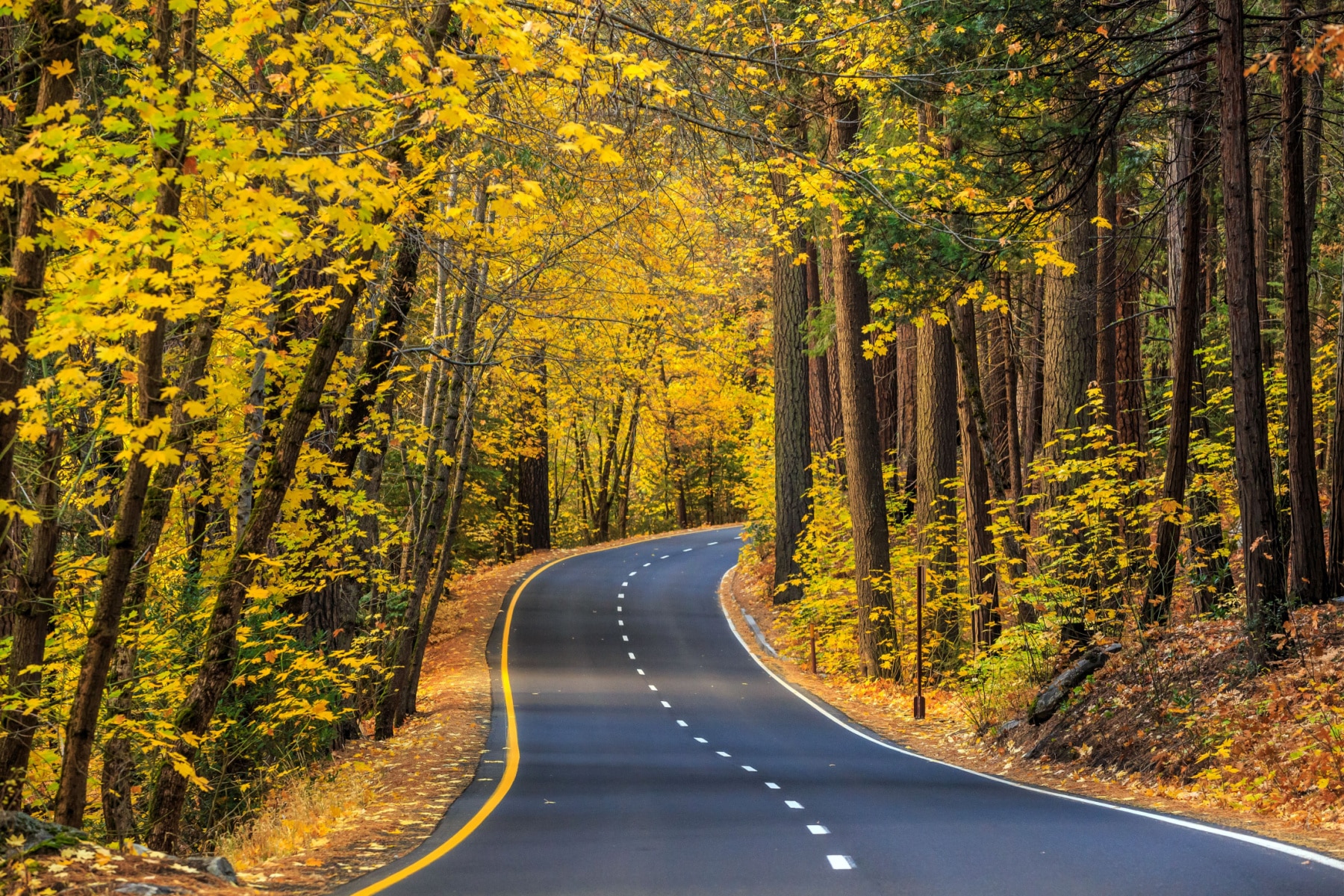
Yosemite Fall Weather
Layering clothing is imperative for visiting Yosemite in the fall, as the daytime highs and nighttime lows will get wider swings. It’s not unheard of to get snow in the higher elevations in October, but it’s usually after November 1.
October is the ideal month for clear, comfortable days with the lowest precipitation chances. As a general guide, expect a five-degree temperature change for every 1,000 feet you ascend or descend.
October in Yosemite
Yosemite Valley (4,000 feet) in October has high temperatures averaging 60-70°F and lows around 40-50°F, with about 3-4 inches of precipitation, mainly rain with a bit of snow at higher elevations. This is one of the drier months in Yosemite National Park. It’s possible to get highs into the 80s and lows below freezing.
Tuolumne Meadows (8,600 feet) will be colder due to the high elevation. In October, high temperatures average 50-60°F and lows around 20-30°F. Up to two inches of precipitation can be expected, mainly rain and snow mix.
November in Yosemite
Yosemite Valley in November has high temperatures of 50-60°F and lows around 20-30°F, with four inches of precipitation, mostly in the form of rain in the valley. This could be good news for waterfall lovers. Don’t rule out a snowstorm in November.
Tuolumne Meadows in November has high temperatures of 40-50°F and lows around 10-20°F, with three inches of precipitation, mostly snow, due to its high elevation of 8,600 feet.

Fall Road Access in Yosemite
Yosemite National Park is open year-round, 24/7. However, seasonal road closures leave certain areas of the park off-limits.
One of the biggest impacts on Yosemite in the fall is the annual closure of Tioga Road. This generally happens in early November. Historically, it has closed as early as October 17 or as late as November 27. You’re really at the mercy of the weather. When Tioga Road closes, no access to Yosemite is possible from the east.
NOTE: All park services on Tioga Road end on September 31. You can access the road until the winter closure, but no amenities are available along the way.
Glacier Point Road and Mariposa Grove Road are also subject to closure when the winter weather settles in. The earliest Glacial Point Road has closed is November 5. The earliest for Mariposa Grove Road is November 9, but since 2021, there have been four years when this road didn’t need to close for the season.
ROAD CONDITIONS HOTLINE: Always check road conditions in Yosemite by calling the hotline (209)372-0200. Press option 1, then 1 again.
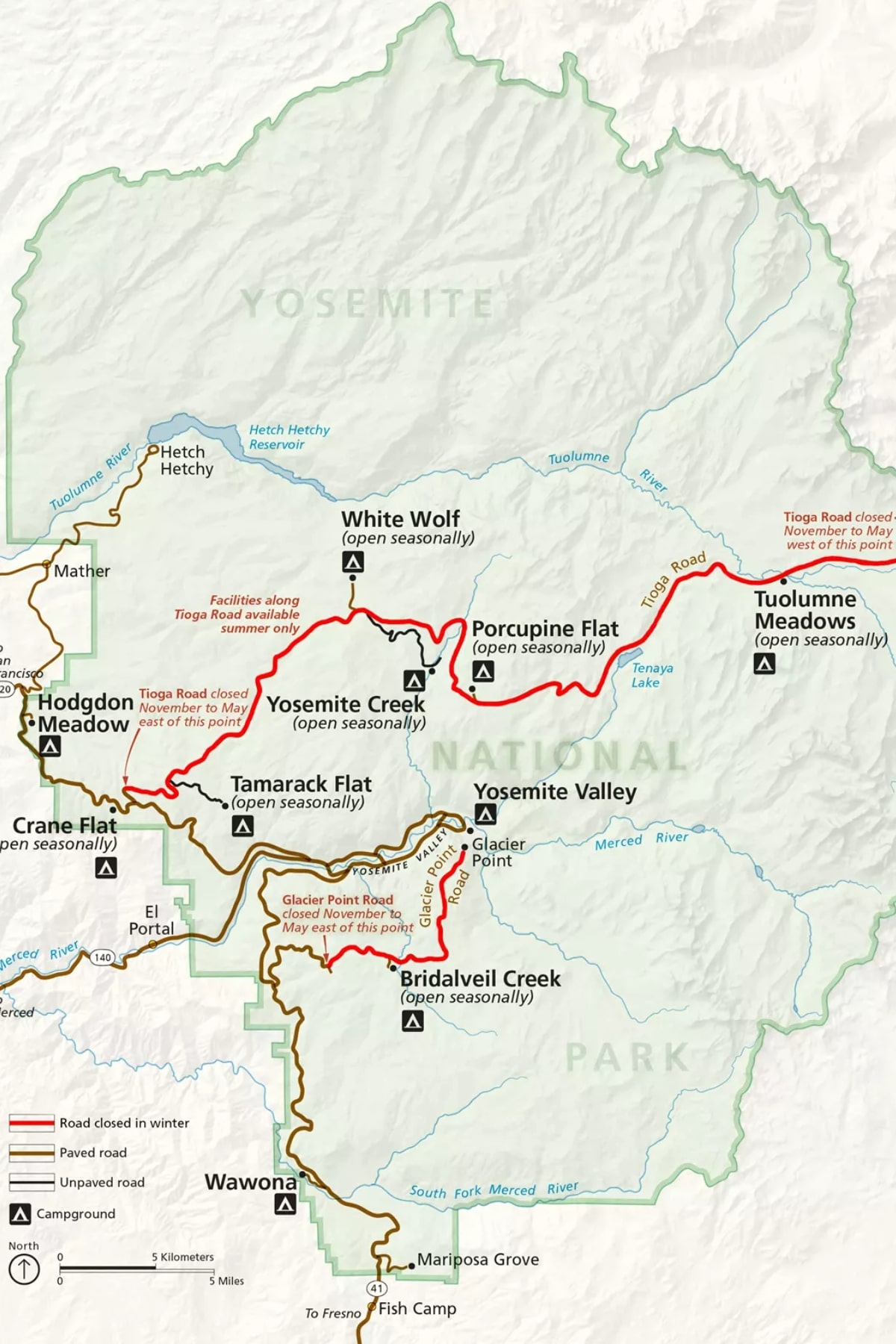
Best Fall Foliage in Yosemite
The deadpan honesty of Yosemite National Park rangers strikes again with this simple statement on its website–“Yosemite is not known for having spectacular fall colors because most of the trees are evergreen.”
Instead of reinventing the magic of Yosemite, it’s the subtle changes that paint the new palette of fall among the granite landscape. The perfect cocktail of leaf color changes is due to a delicate balance of temperature, sunlight exposure, elevation, and length of days, you can find several trees that change each season between October and November.
| Type of Tree | Color | Where it is found in Yosemite |
| Quaking aspen | Yellow | Glacier Point |
| Dogwood | Red | Yosemite Chapel in the Valley |
| Non-native sugar maple | Red | Yosemite Chapel in the Valley |
| Bigleaf maple | Bright yellow | Wawona |
| Black oak | Orange/Brown/Gold | Yosemite Valley |
| Ceanothus/Deer brush | Yellow | Anywhere between 2,000 – 3,000 feet |
| White alder | Yellow | Along Merced River below 4,500 feet |
| Black cottonwood/Fremont cottonwood | Yellow | El Portal |
| Poison oak | Red to purple | El Portal |
While Yosemite can’t give the show of the Great Smoky Mountains National Park, here is a brilliant effort that breaks the monotony of 50 shades of gray and evergreen.
Most importantly, you need to know that peak fall foliage happens in late October or early November until the first big winter storm. That’s a tough time to plan a trip, given the road, trail, campsite, and amenity closures in the park.
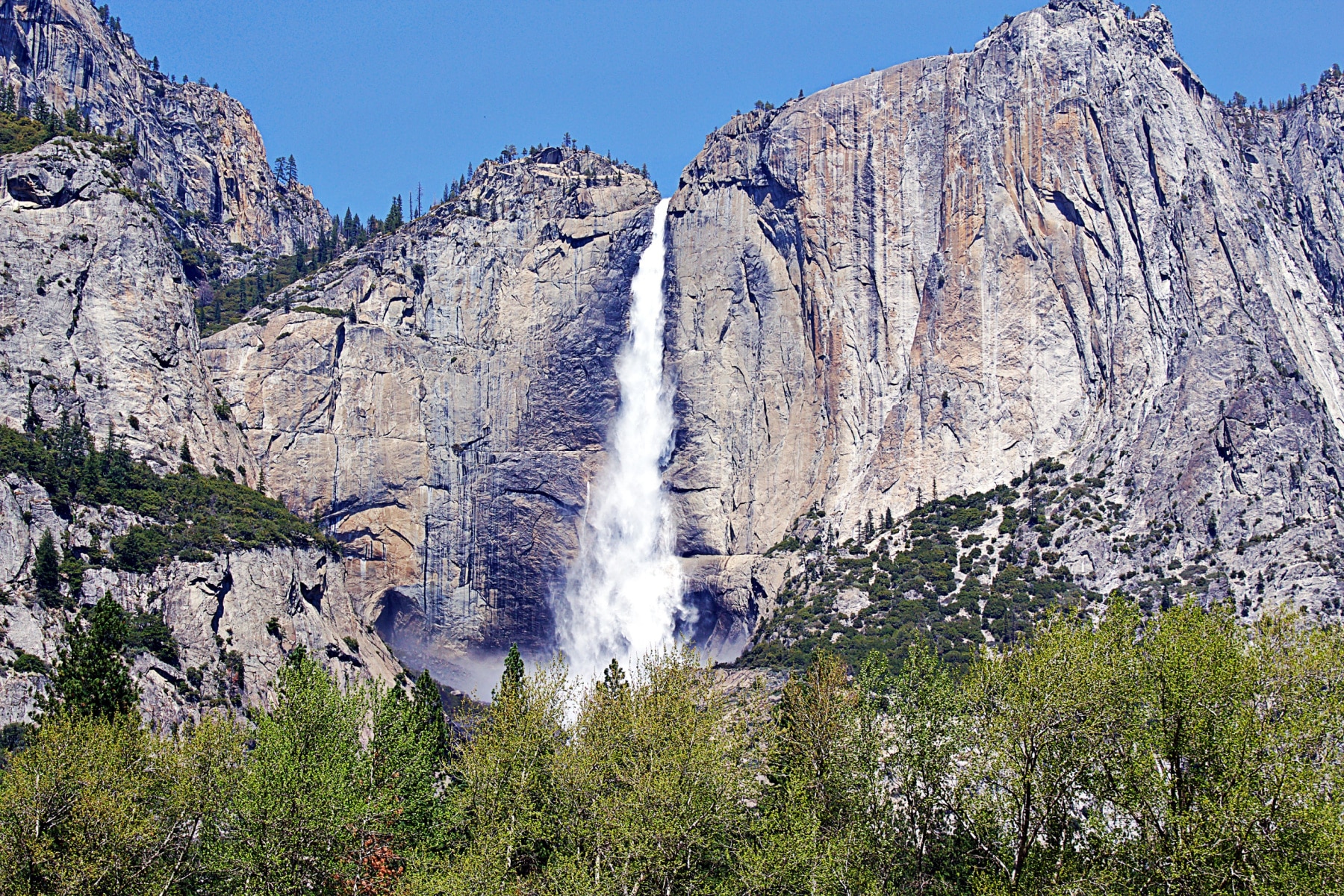
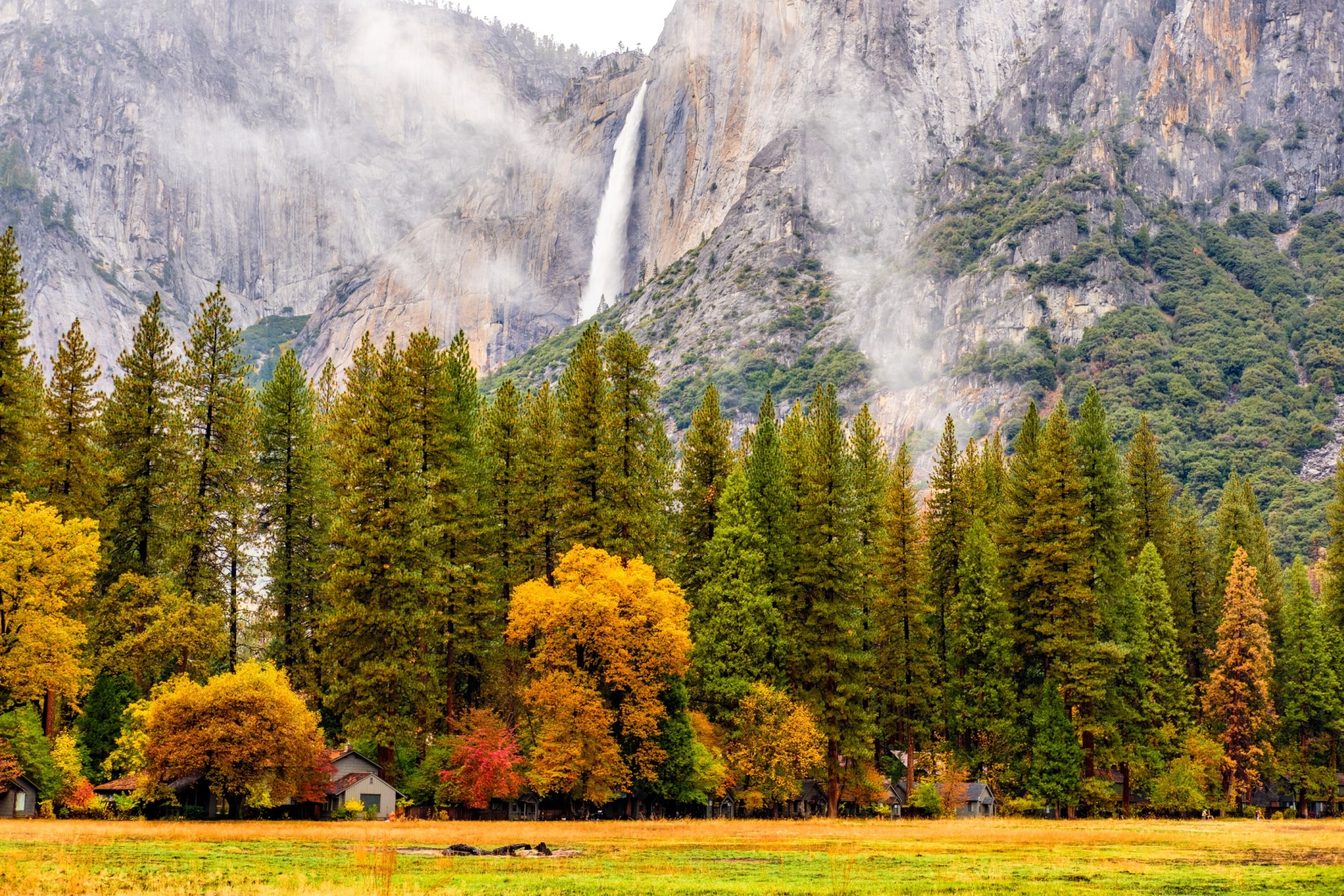
Poison Oak Still Dangerous in Fall
The rule “leave of three, let them be” still holds in Yosemite in the fall. The painful rash of poison oak is still likely if you come in contact with the plant, even when it’s a stunning shade of rouge in the fall. Even if you’re visiting after the leaves fall off, that dangerous oil is still stuck on the bare branches.
Poison oak is found in abundance along El Portal Road. Your best defense is to stay on marked trails and wear long pants so your skin never comes in contact with the plant.
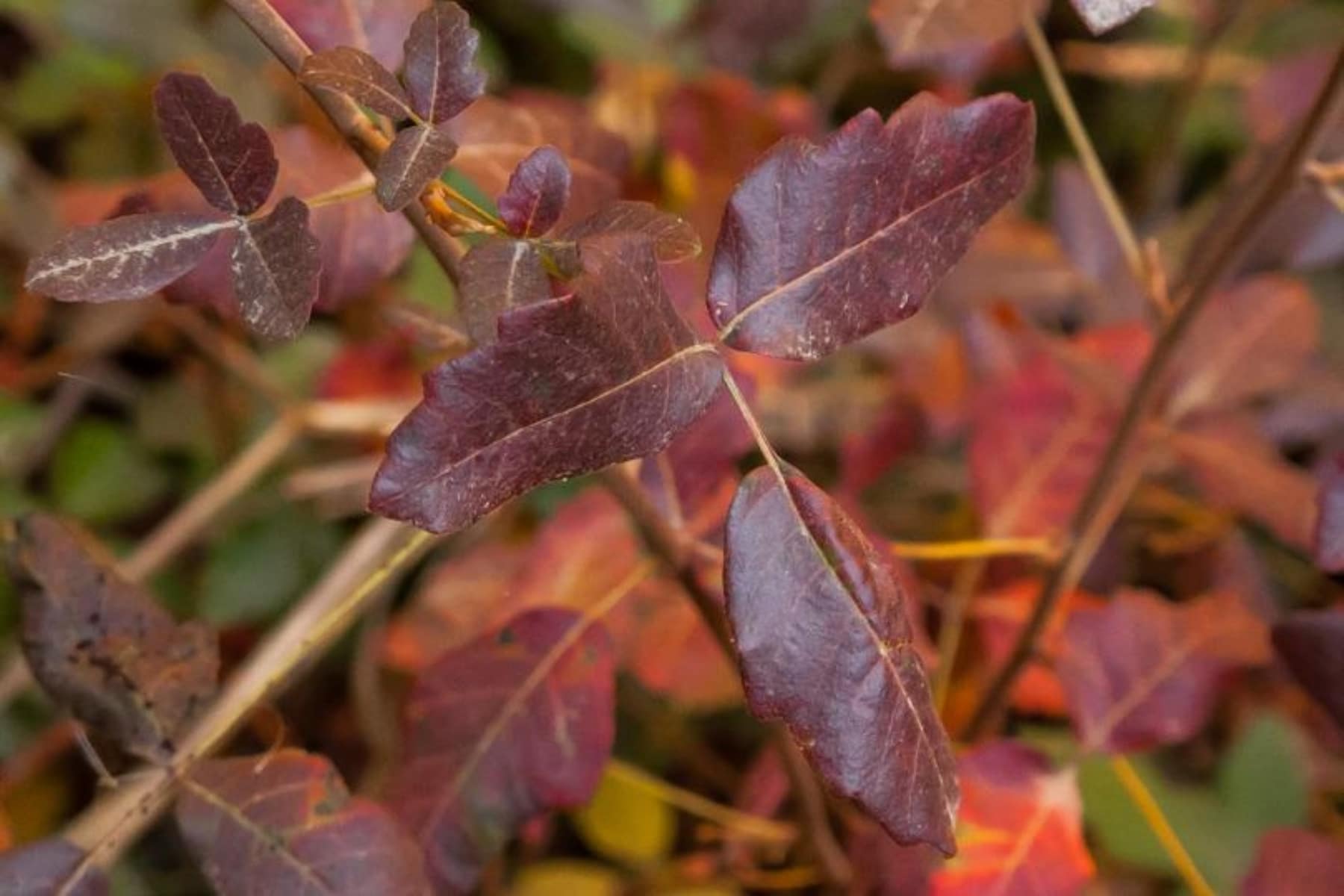
Bears in Yosemite in the Fall
I know you want to know, so yes, you can see bears in Yosemite in the fall. While bears are most visible in Yosemite National Park in spring after hibernation, they spend fall eating as much as they can to get ready for the long winter’s nap. That’s up to 20,000 calories a day. You’d have to eat 57 Pumpkin Cream Cheese Muffins or drink 51 Pumpkin Spice Lattes to reach that number.
DID YOU KNOW?

Even some aspects of fall’s transition feed this furry beast. Once the bears get all the late summer berries they can, they’ll feast on acorns that drop from black oak trees. Since these trees are near roads, it’s also a reminder to be bear-aware when driving and slow down.
Here are a few safety tips for viewing bears in Yosemite in the fall:
- Stay 50 yards away from any bear
- Bear spray is not allowed in Yosemite National Park. If you see a bear, do this as long as necessary to scare the bear away.
- Use bearproof food lockers throughout the park, and never bring food on a hike that isn’t secured in your bearproof container.
Only black bears are found in Yosemite. Actually, only black bears are found in all of California. Grizzlies were once abundant in California and even made it on the state flag and the official state animals. Even though they no longer live here, the bear “remains one of the state’s most enduring and visible symbols.“

The Golden Hours of Yosemite
The term “golden hour” has many meanings in Yosemite. In general, the term golden hours means ideal light conditions for photographs to get that warm glow. Photographers consider the first hour after sunrise and the hour before sunset the golden hour, and Yosemite is one of the best places on earth to capture the gold.
Since fall in Yosemite is known as the “Golden Hour of Seasons” due to the gold tones of the foliage, you can find amazing fall photograph opportunities here.
At the same time, the golden hour of Yosemite also brings the biggest crowds to the most popular scenic spots, with Half Dome being the most photographed sunset spot.
MORE: Check the sunrise/sunset time for your Yosemite in the fall visit. Yosemite is part of California, which means it will “fall back” one hour on the first Sunday in November. This means the sun will rise and set an hour earlier on that Sunday.
The golden hour should not be confused with Firefall, which happens in February. Reservations are now required for that on the last three weekends in February.
Those reservations went on sale on December 1.
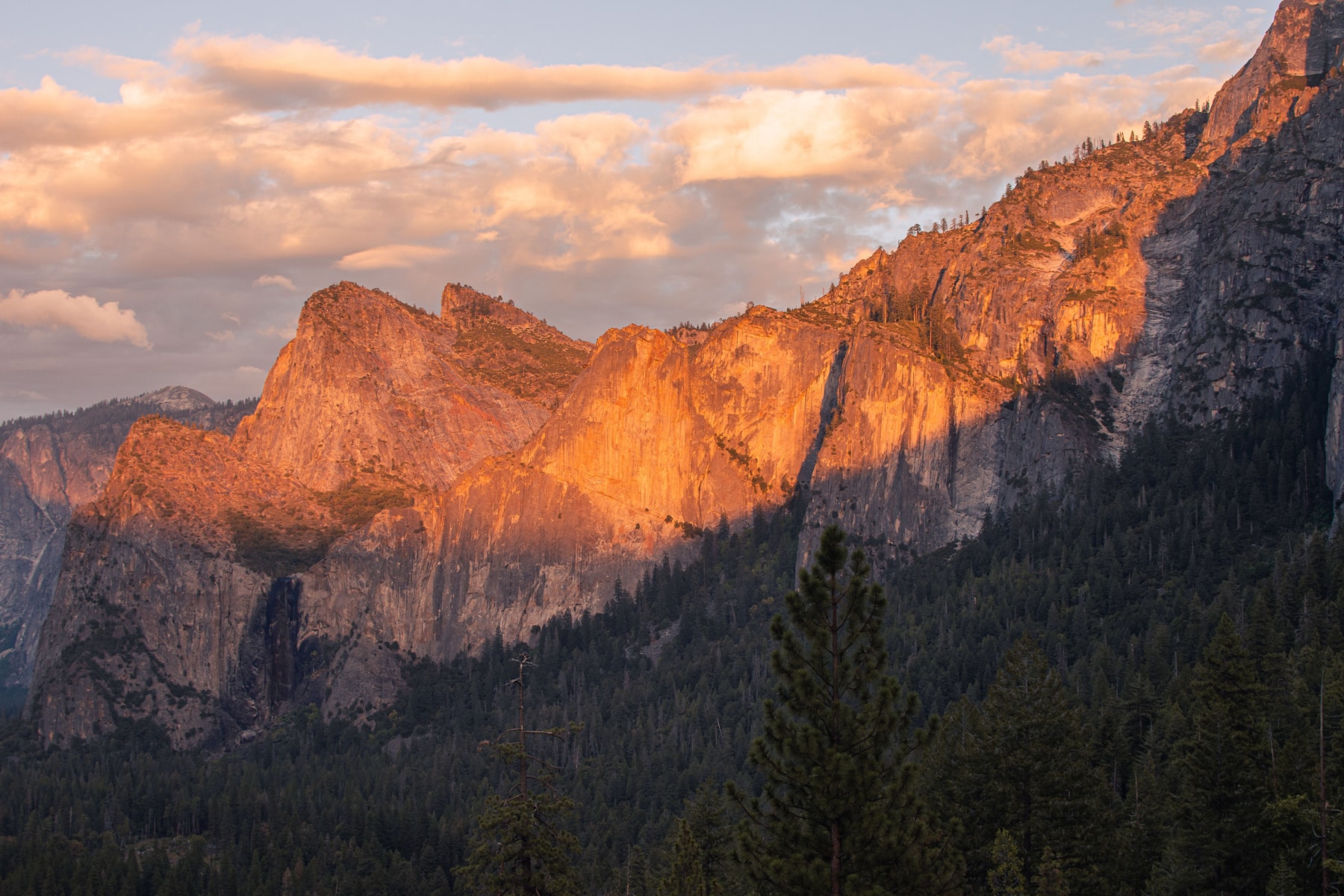
Hiking Half Dome In the Fall
Hiking Half Dome offers one of the most challenging activities in the park. While the cables are up, you’ll need to score a permit. The cables usually come down on the second Monday in October. Once the cables are down, you can still climb Half Dome without a permit.
Here’s a lesser-known fact about the Half Dome cables–they don’t actually “come down.” The cables are always there. It’s just the posts that make the cables easy(ish) to climb aren’t there, removing the handrail most hikers need to make the final summit.
However, you will need technical skills to even think about attempting this. If words like prusik loops and carabiners are foreign to you, you aren’t ready for Half Dome without cables.
The trails to get to Half Dome can also be closed, with the Mist Trail closing as early as November 11.
We are by no means encouraging you to hike Half Dome without the handrails. We are just providing information as we know Half Dome is a popular fall activity. If you want to make this trek with the rails up, plan for a fall trip before the second Monday in October.

Yosemite Camping In the Fall
Camping in Yosemite in the fall is a popular way to enjoy the cooler air and scenic views while offering better chances in the campsite reservation system.
Campsites open all year include:
Importantly, these campsites require reservations through the end of October but become first-come, first-served on November 1.
Campgrounds that aren’t year-round will close around mid-October. You must have reservations for these sites anywhere from two weeks to five months in advance.
If you’re looking for wilderness camping, you’ll need a wilderness permit throughout the year and reservations through October. In November, the permit is still required, but reservations are not.
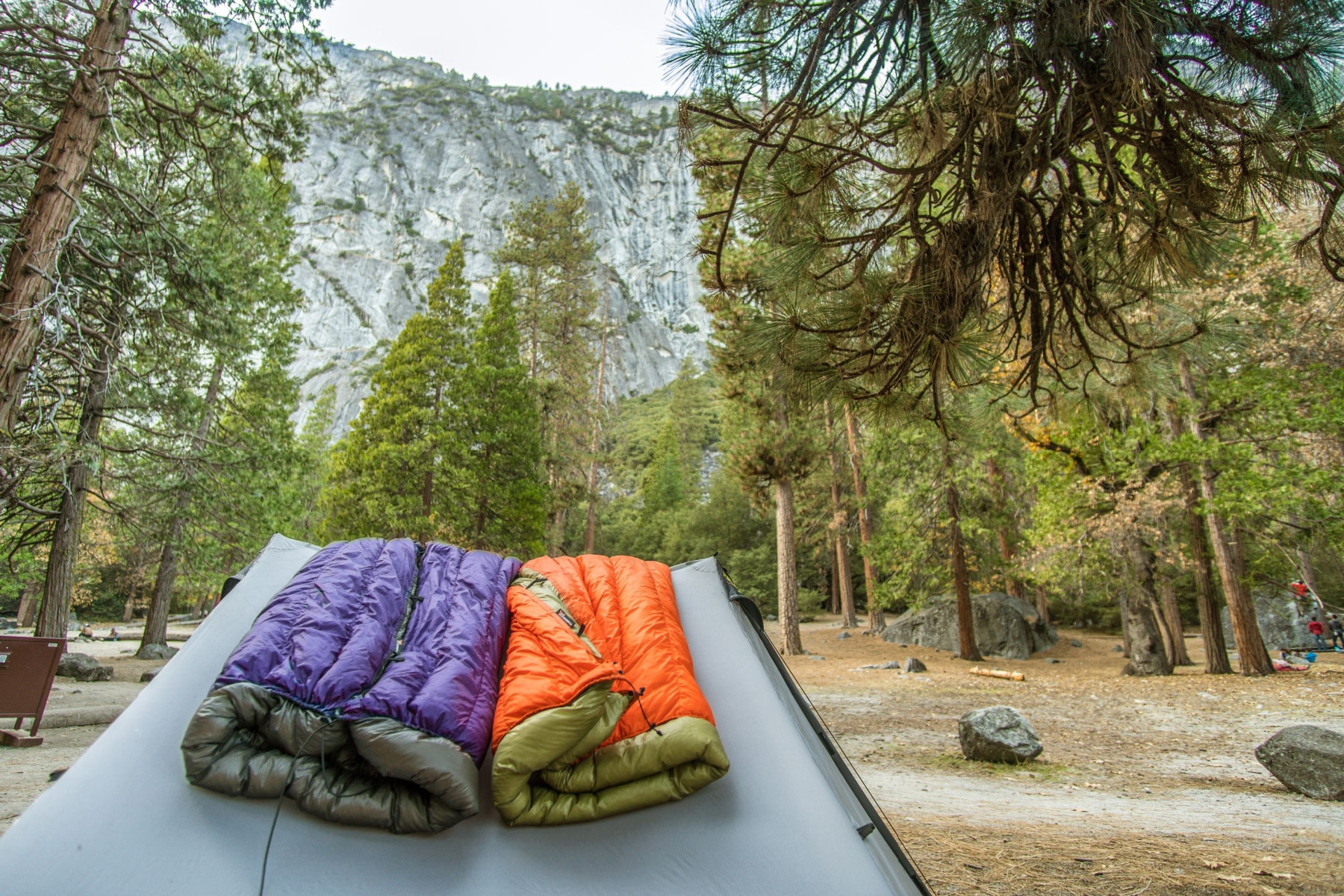
Yosemite Waterfalls in the Fall
The key feature missing at Yosemite in the fall is waterfalls, but don’t give up hope. While Yosemite Falls might be bare, Vernal Falls, Nevada Falls, and Bridalveil Falls are fed by the Merced River, so they have some kind of activity in the fall. It might just be a trickle.
Be that as it may, fall storms can bring some flow back to the falls, but that also would mean muddy trails–be careful what you wish for. The cooler temperatures at night and the potential for snow at higher elevations can also bring a unique appeal to the waterfall frames.
Spring is the best time to see waterfalls in Yosemite when the snow is melting. Fall hikers should be careful around waterfalls as ice and snow can accumulate on the trails. When conditions are too dangerous, the trails will be closed temporarily.
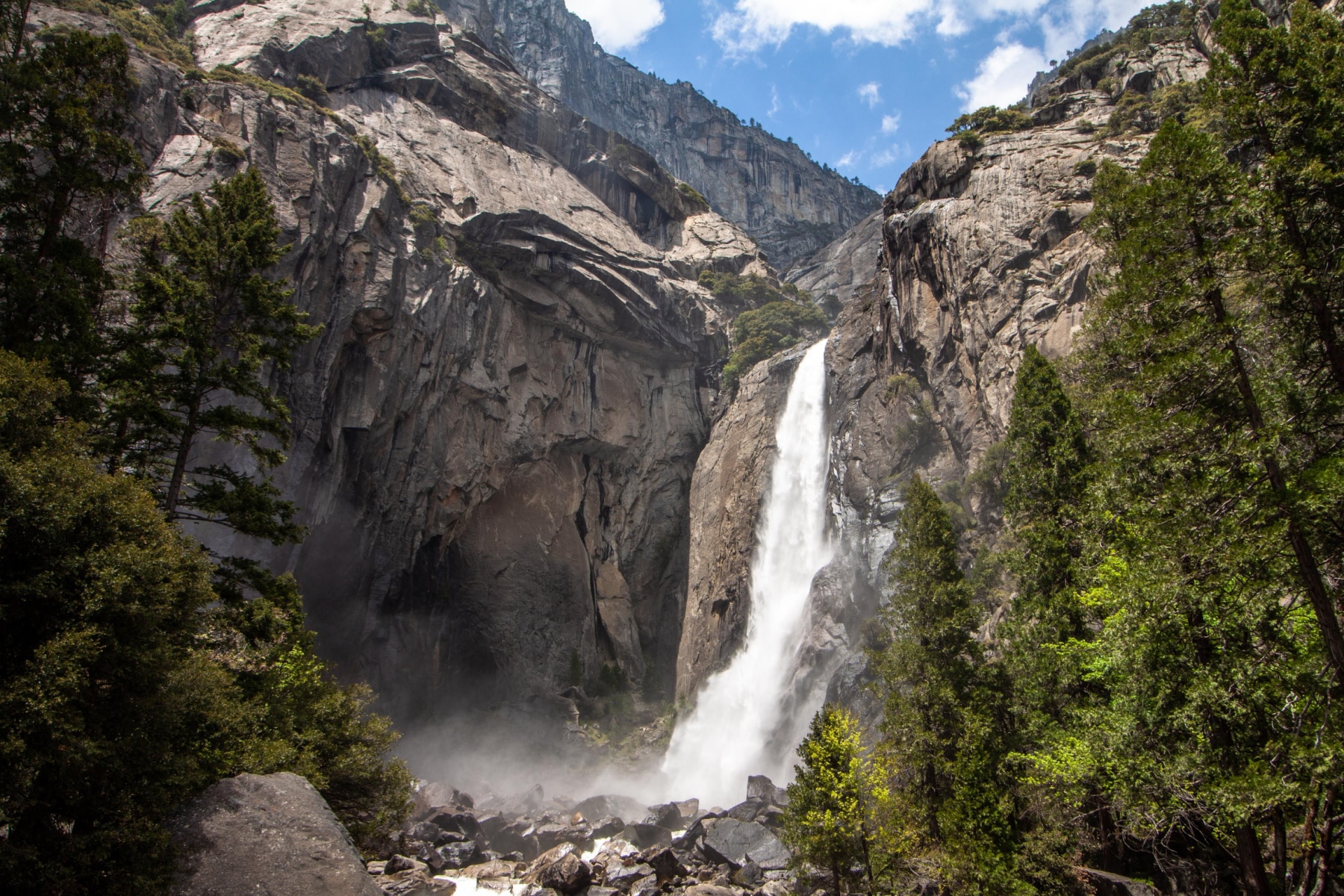
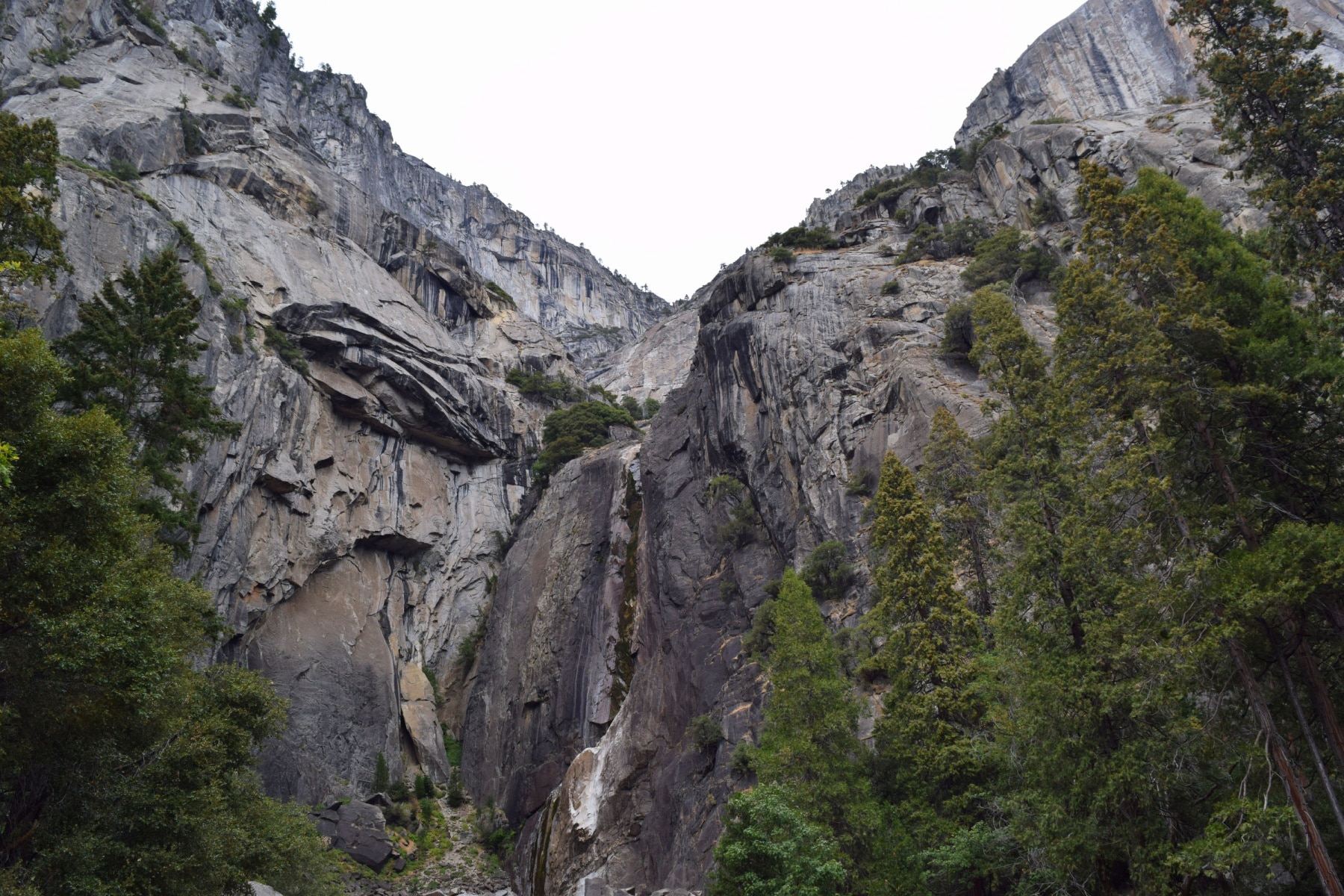
Visiting Mariposa Grove in the Fall
Fall brings a special vibe to the sequoia section of Yosemite National Park. Shuttle service runs to Mariposa Grove through the end of November. After that, you can drive Mariposa Grove Road only if you have a disability placard. Access is still available by walking the road or taking the Washburn Trail, which is four miles roundtrip for either one.
One of the best hikes in Yosemite in the fall is through the Grizzly Giant Loop Trail, where you’ll pass trees dating back 3,000 years. The strenuous hike to Wawona Point is well worth the effort for the views of explosive color across the valley.
Even if you arrive in late fall, the road and trails transition to cross-country or snowshoeing trails.
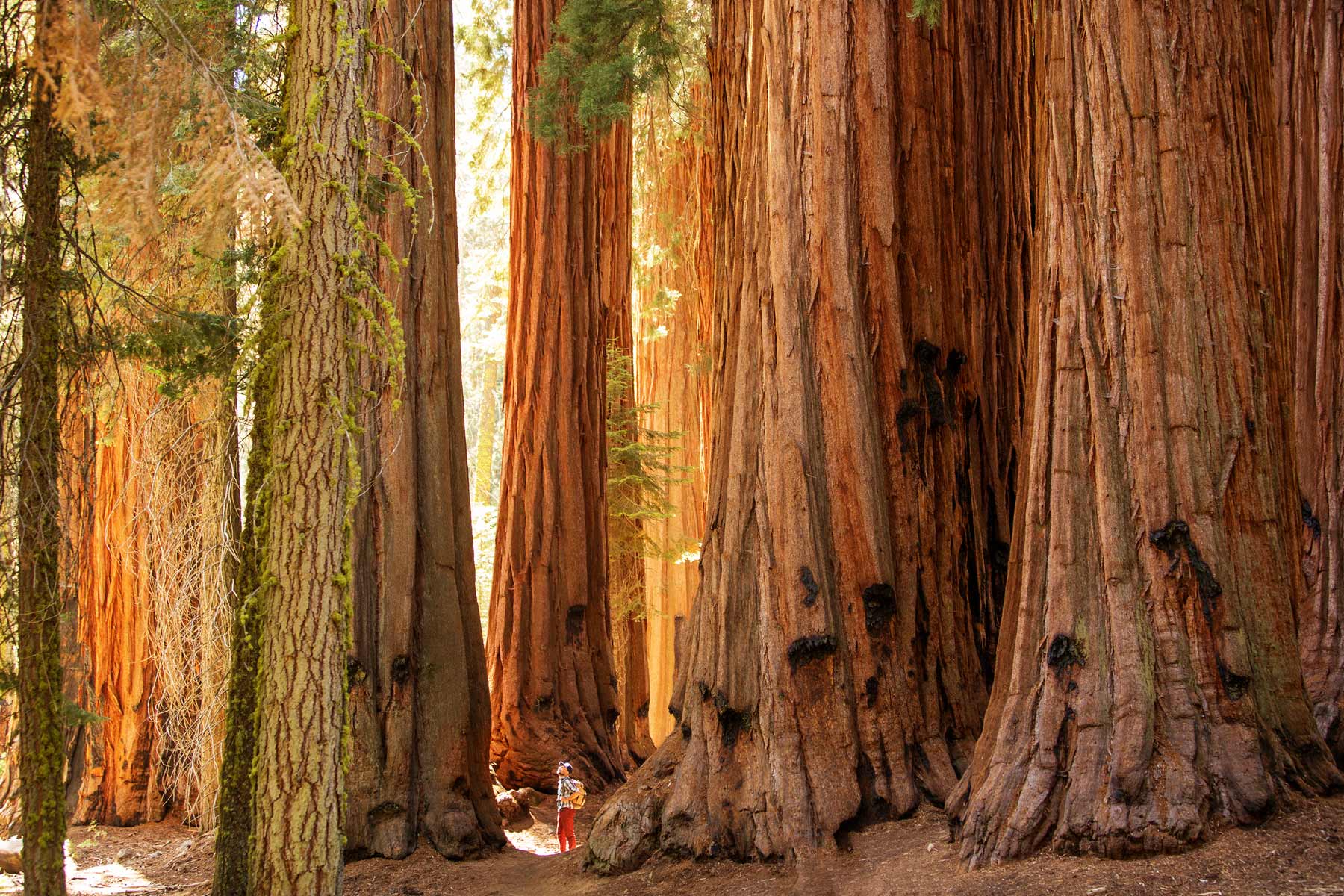
FAQ: Yosemite in the Fall
Bring tire chains for fall visits, but by November, chain requirements could be in place. The roads most frequently impacted by chain requirements are Wawona Road, Big Oak Flat Road, and Badger Pass. Check Caltrans for tire chain requirements going into the park.
October is a perfect time to visit Yosemite for smaller crowds while the bulk of the park is still accessible. November is also a great time, but you’re running into more seasonal closures and the potential for snow to impact roads and trails.
Each option has its own rules and restrictions for how late it runs into the fall. Some stop in early September and others can go until the end of November if the weather allows. Here’s a link to get the most updated information. No public transportation goes to Hetch Hetchy any time of the year.
Yes! Hetch Hechy is one of the lower altitude locations in Yosemite, which can make the summer heat brutal–in addition to the notorious summer mosquito problems. Fall and spring have the ideal weather conditions in Hetch Hetchy.
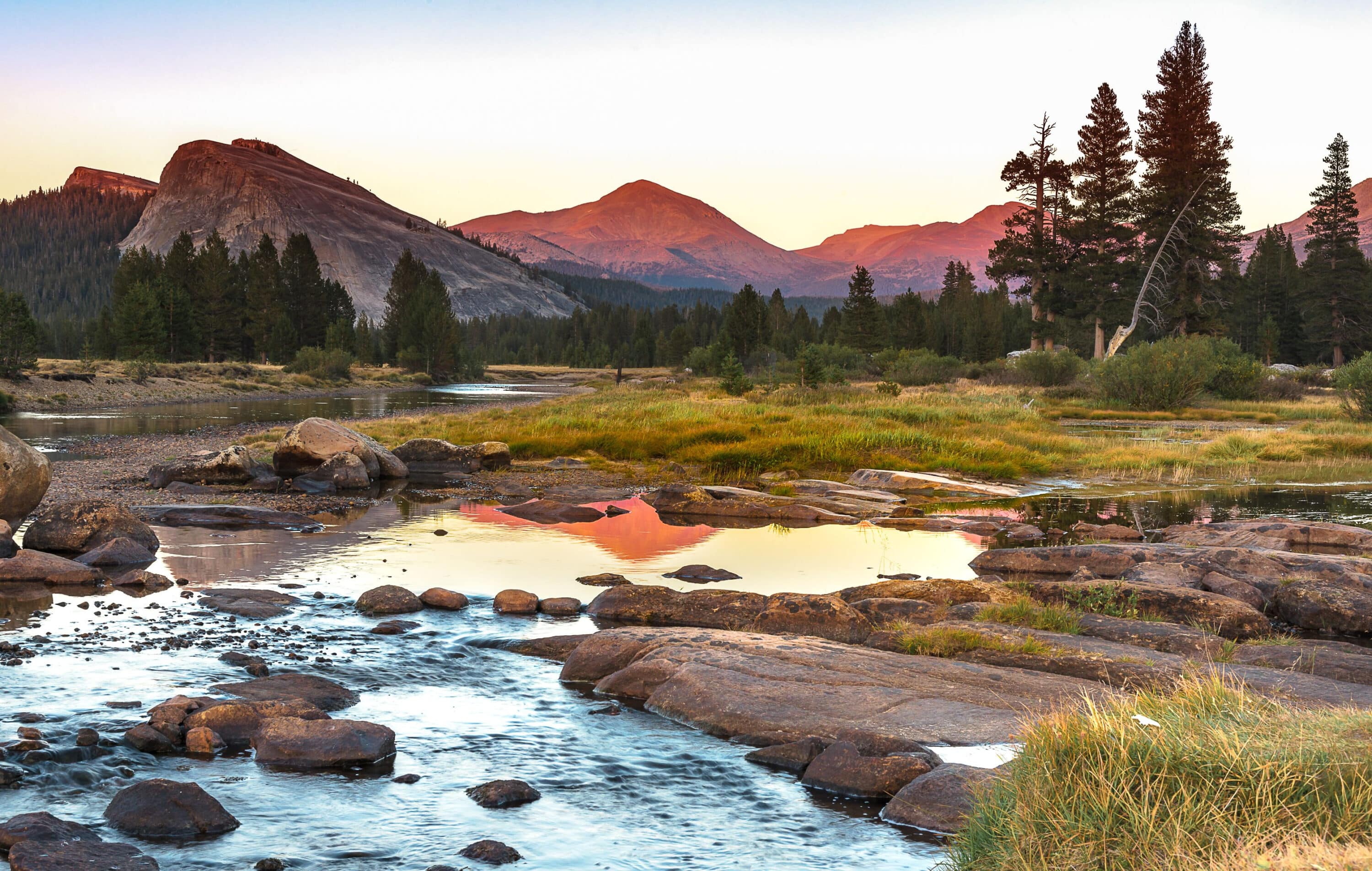
Is A Fall Yosemite Visit Worth It?
I’m sure I’m not alone in being frustrated with the Yosemite traffic in the summer. A lower visitor volume automatically sends Yosemite to the top of my places to visit in the fall. While you do get the subtle feeling of fall, fewer bugs, and more elbow room on the trails, you’re also racing against winter.
The peak foliage also happens after some campsites have closed for the season. Even with reservations, you’re playing a game of “Will this be the October when a huge snowstorm hits Yosemite?”
On October 17, 2004, an early winter storm slammed Yosemite, leaving people stranded on top of El Capitan and nearly two dozen more in the wilderness.
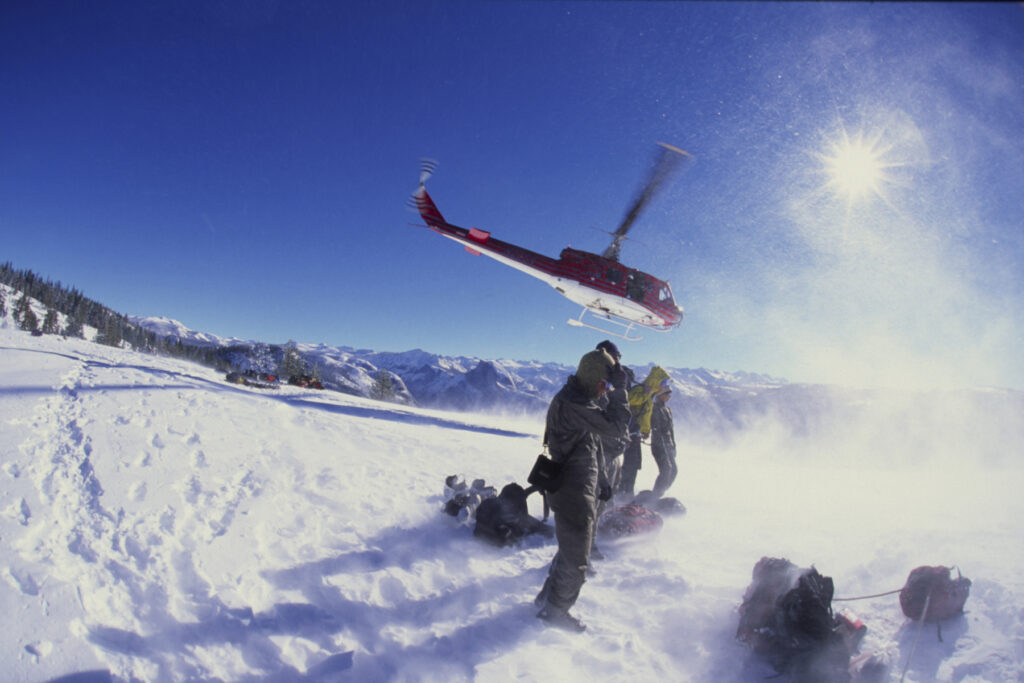
You also have to worry about the wildfire season until the rains of fall arrive, and even then, you need to be aware of wildfires in the region.
If waterfalls in Yosemite are important for your visit, you might be disappointed. Consider a spring visit instead before the summer crowds pick up.
As with any season in Yosemite, there are risks and rewards. If you stay aware of the weather and use common safety practices, you will truly enjoy Yosemite in the fall. The brief window of opportunity makes the visit that much more magical, and you’ll be able to get to more locations before the roads close without all that traffic.
Pin Yosemite in the Fall
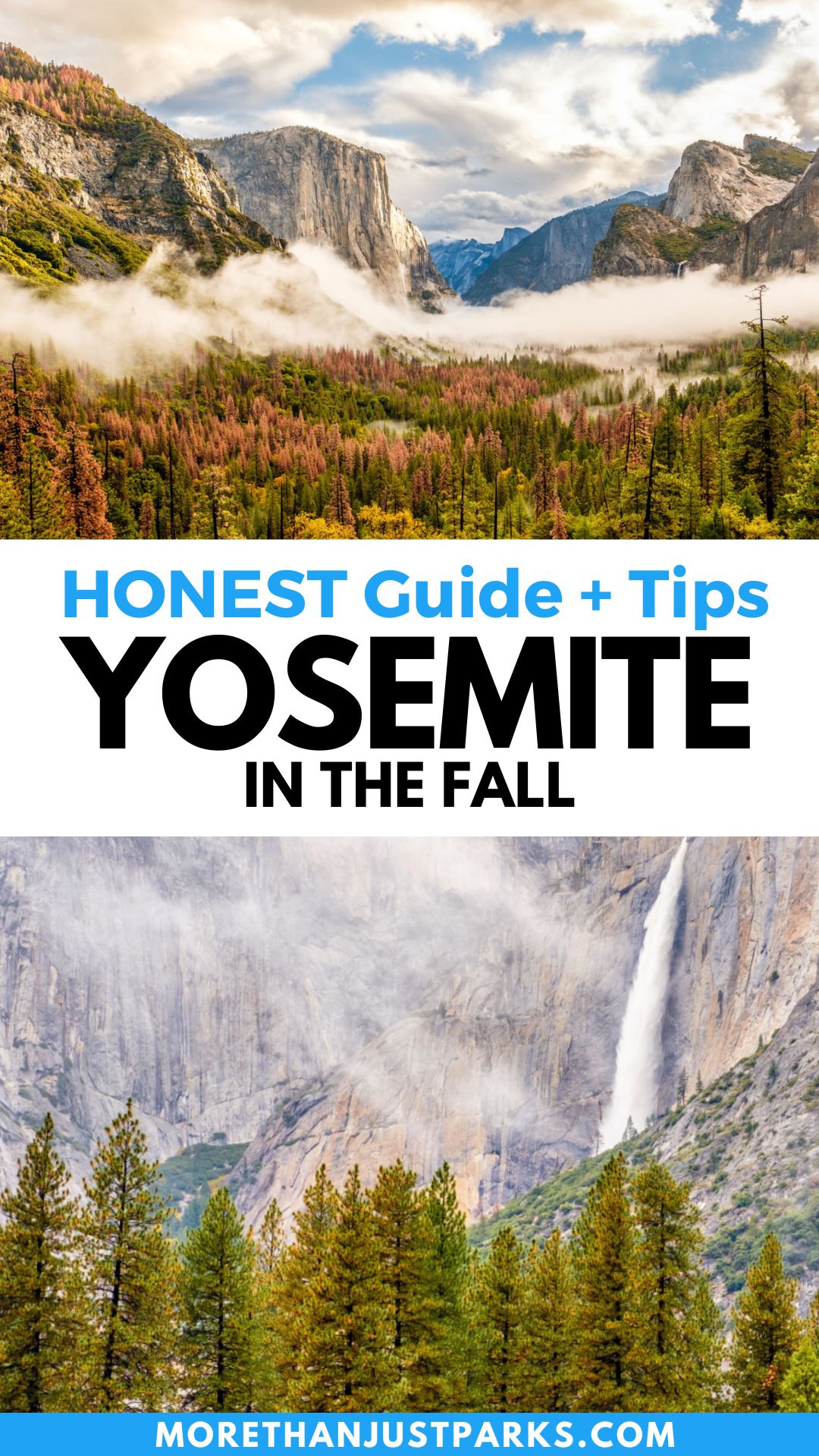
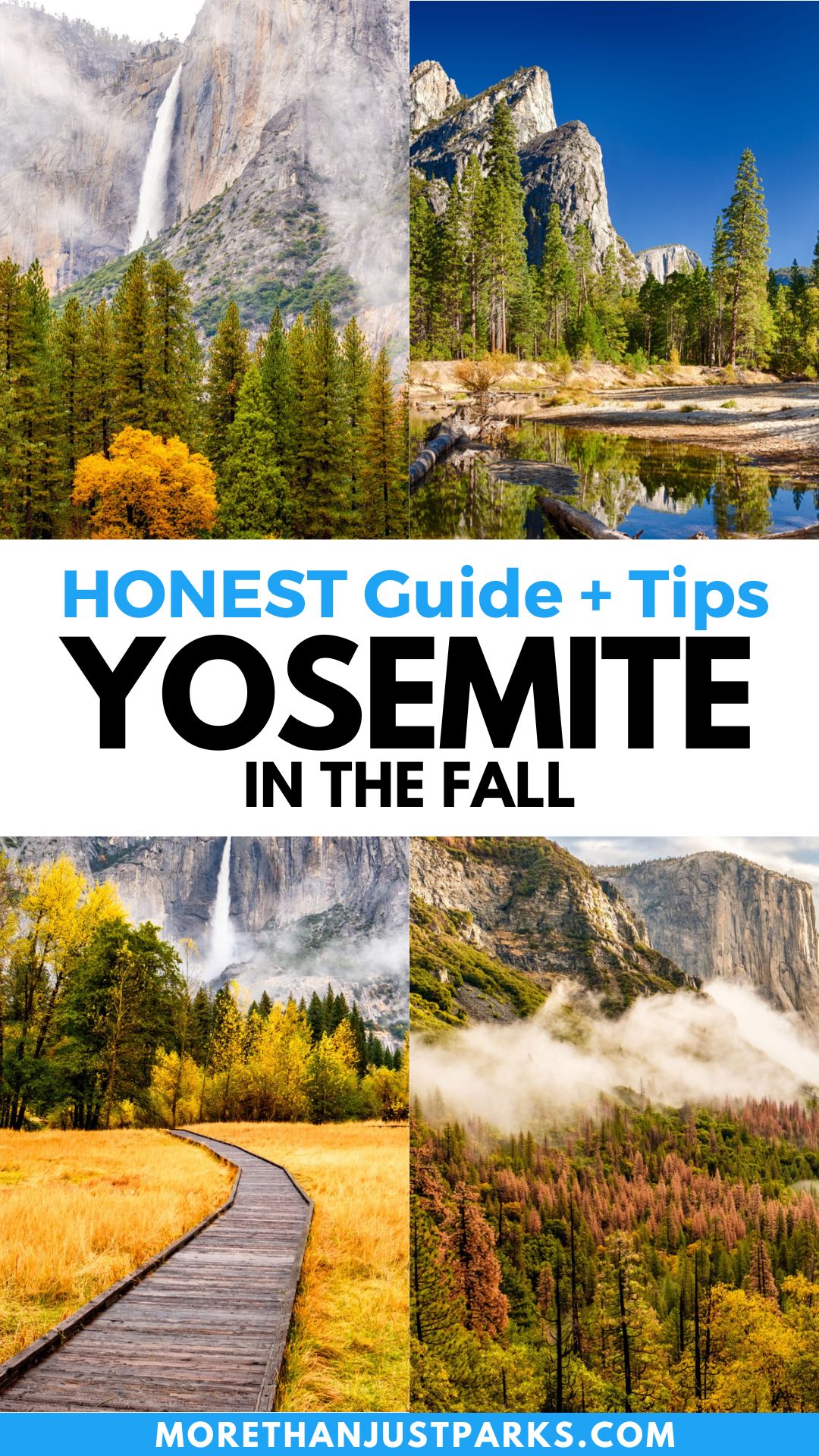
Helpful Related Links
Explore more of Yosemite: 20 AMAZING Things to DO in Yosemite National Park
Love those Sequoias? Here’s an easy Yosemite Road Trip: 15 EPIC Things to Do in Sequoia National Park
For those who want EPIC fall foliage: 10 BEST National Parks to Visit in the Fall (Ranked by Experts)
Explore Zion National Park in Fall: FALL in ZION National Park: Everything You Need to Know (+ Photos)
Acadia National Park’s fall tourism is skyrocketing: It’s not hard to see why this Maine park is so exceptional
The Best California National Parks: 20 BEST California National Parks Ranked (Best to Worst)
When you really want to avoid crowds: 10 Least Visited US National Parks (Updated 2023 + Photos)
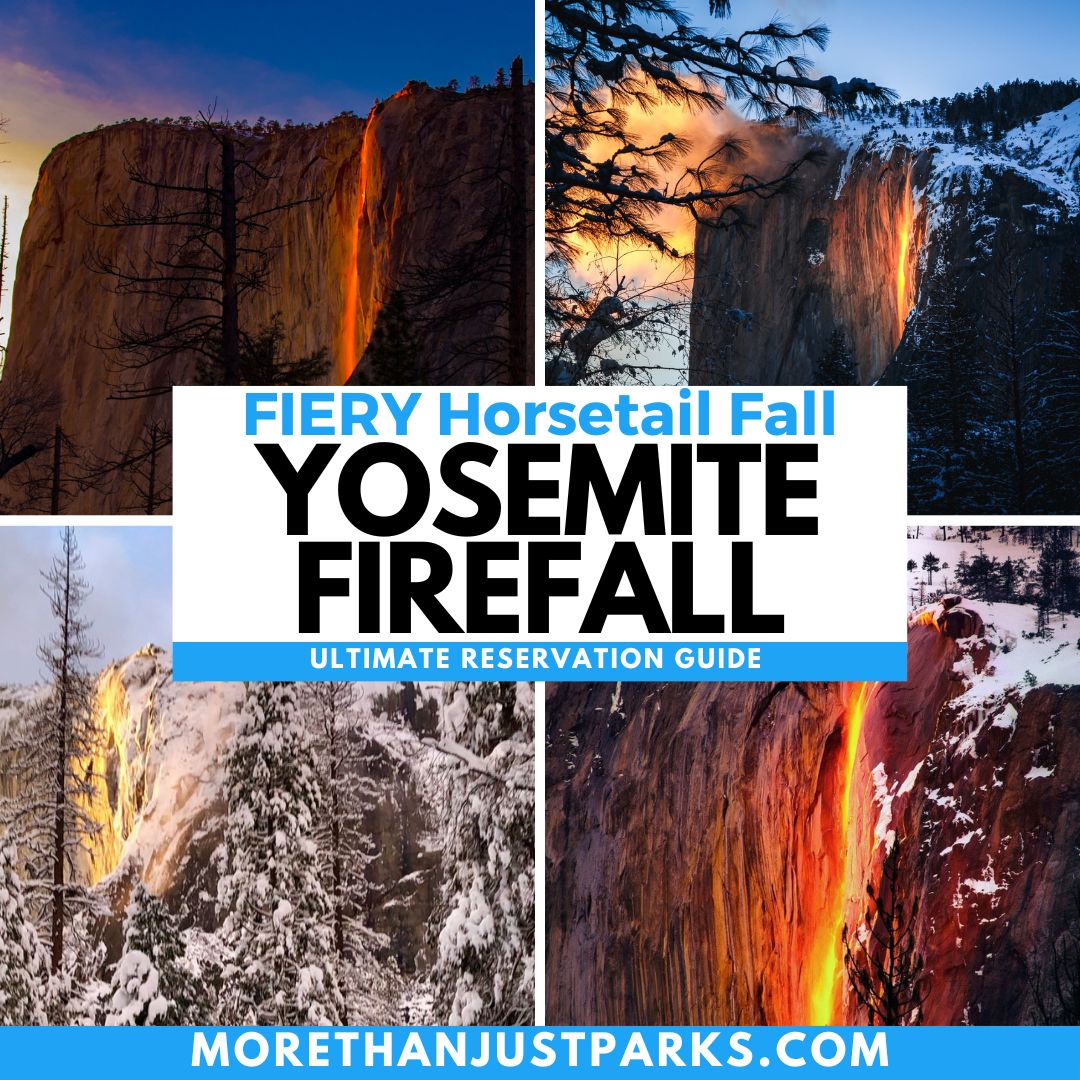

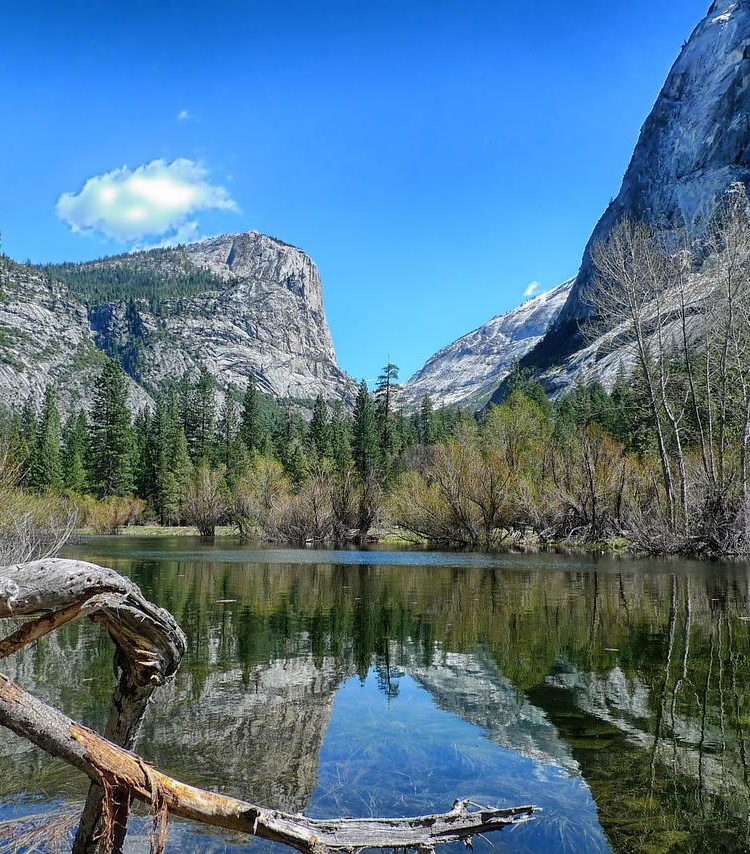
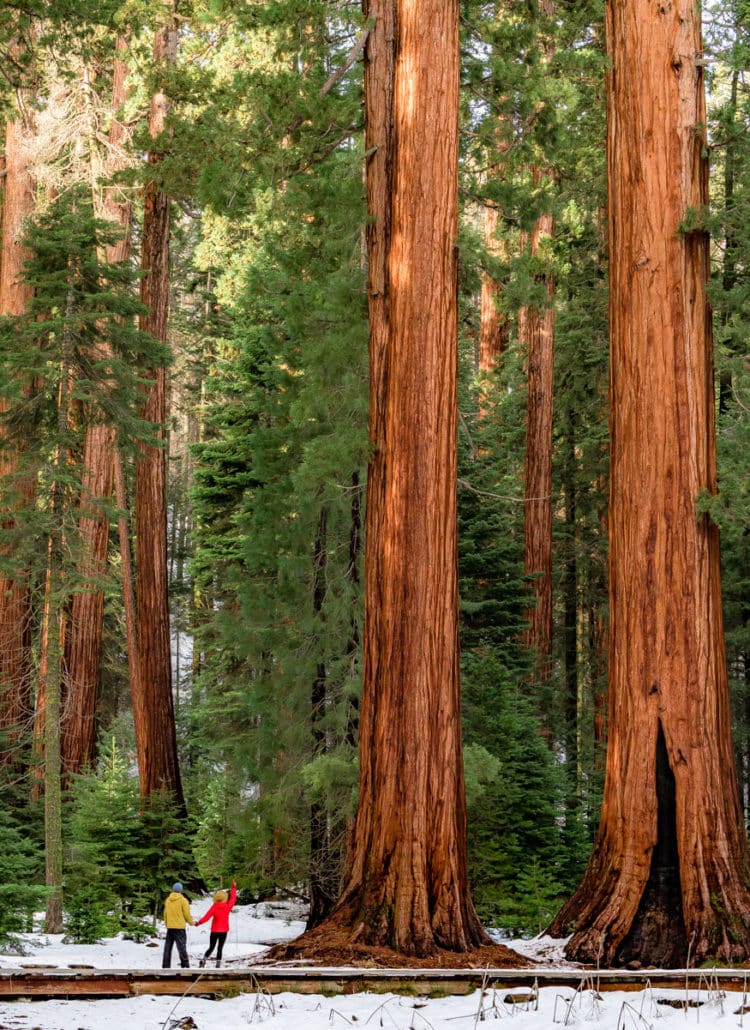
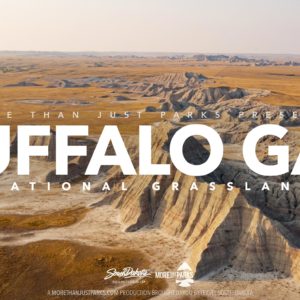

Leave a Reply